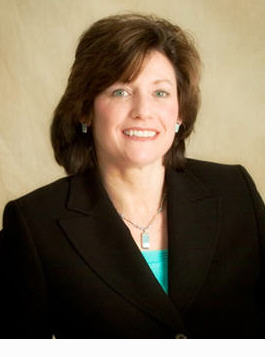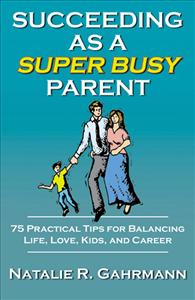
Tipping the Scale Toward Balance
August 22, 2006—"The best and safest thing is to keep a balance in your life," the Greek playwright Euripides is supposed to have said. Balance, in Greek society, was as revered a concept as wisdom and self control—concepts embodied in the fabled Delphi inscription, "Nothing in Excess." Unfortunately, despite all modern conveniences, keeping life in balance is no easier now than it was in ancient times. "Families have too many activities available to them," acknowledges life balance coach Natalie Gahrmann, "and over-commitment is an easy trap to fall into. Between work, family commitments and extra-curricular activities, family members may feel they're constantly moving in opposite directions and this is a situation that leads to becoming overstressed and burned out."
Gahrmann, who specializes in helping her clients balance their professional and personal lives, stresses that the best way out of the over-commitment trap is to establish congruence between substantial core values and priorities.
“Your values are what you prize most about yourself, your environment, or your life," says Coach Natalie. "Identify the top 3–4 values that are your primary values. When your values are clear your priorities will set themselves and you will be able to redesign your life around your core values.” Gahrmann acknowledges that she does help people define their values using common coaching terms such as “beauty, adventure, pleasure, and security,” but she says, “I help my clients go deeper in defining what that really means to them. I also have my clients look at values in different parts of their life—including their parenting, their life and their work—so they can compare and contrast them and hopefully bring them more into alignment when they’re out of whack. Some of these values could actually be unmet needs that, when met, allow someone to go deeper into their values.” Gahrmann's experience is that when her clients' lives are in alignment with the values they hold dear they are happier and more fulfilled.
Balance creates sustainability
Like most work/life balance coaches, Gahrmann teaches that when we succeed in balancing our work life with our personal life we experience an overall sense of peace, joy, and sustainability as opposed to the stressful sense of barely staying afloat that typically characterizes our experience. Refreshingly, the congruence between what she teaches and what she lives is apparent from the moment she says "hello" in her customary warm, conversational tone. She’s fully focused and very much engaged—and there is no indication that she needs or wants to be anywhere else.
In fact, this quality turns out to be another by-product of a balanced life. According to Gahrmann, it comes from arranging priorities so that each has an appropriate share of focused time. When this is done in balance there’s no need to feel guilty when at work, for example, because there is also appropriate time dedicated to valued priorities at home.
But do we really have this much control over allocating our time? Especially that time devoted to work? Gahrmann’s experience indicates that we have more control than we think. She suggests that if your time at work is focused well, your employer may be more interested in making the kinds of changes that will allow you to spend more time at home. The same is true when we make an effort to focus at home—the result is that our families are happier and everyone can be more supportive of time spent at work. “Quality time is often more important than quantity because you’re fully focused and connected with others,” says Gahrmann. “This enriches and enhances relationships—it builds trust, and allows for more communication.” But quality time doesn’t happen by itself, she reminds her clients. “Prioritizing is a very important for quality time, as is planning, scheduling, and even multipurposing.”
Congruence is the key
Gahrmann’s website defines her vision as being that of: “A world where parents and children realize their fullest potential and achieve their own greatness.” When asked which area of life has the biggest impact on realizing this vision, she didn’t hesitate. “Congruence! When your values and priorities are aligned with the way you’re actually living your life, you have congruence. There aren’t different priorities playing tug of war with each other and you don’t have the inner conflicts that come when you’re not doing what you really want to be doing.” For some people this means being honest with yourself about what you want from your life. Do you have small children and do you feel inner conflict occasionally when you’re at work because you wonder if they’re getting enough quality time from you? In that case, Gahrmann might suggest exploring alternatives at work to bring your family time more in balance with your values. This can be just as difficult for women to do as it is for men.
“I think this depends a lot on the investment mothers have made in their education and training and what their values are about working,” says Gahrmann. “Many of my clients are high achievers who have been conditioned quite early in life to be independent and successful on their own. Some get burnt out and would prefer less stress, but they don’t usually want to give up their professional identity.”
This is when Gahrmann might suggest taking things at work a little more slowly for a couple of years. If accepting that big promotion would throw your work life and home life out of balance, she suggests considering the fact that maybe you aren’t ready for that promotion, and you should be honest with your employer. She has done this herself, as have many of her clients and she knows good employers will often work with you to find alternatives.
“Tell them it’s just not the right time,” she suggests, “but let them know you would love to think about a promotion—say a couple of years down the road.” While the promotion may not come along again right when you want it, you will probably still find you are much better off with the reduced stress in the interim and that others will respect you for being honest about your limitations. This may work to your advantage later.
There are also other alternatives an employer might consider. “Alternative arrangements can include flexible scheduling. It can also include job sharing, telecommuting, a part-time or even a compressed work week,” Gahrmann suggests. “Many of these options don’t really cost the employer anything but sometimes they’re reluctant to set a precedent.” But, she adds, trust is a big factor. “Someone who’s got an established reputation can negotiate for an alternative work arrangement more easily than someone coming in off the street.” But the bottom line seems to be that if you are succeeding at work and have good work relationships, your employer may be much more willing to accommodate you.
But employers aren’t the biggest obstacle in the quest for balance between life and work priorities. In some cases we can truthfully say that “we have seen the enemy and she is us.”
“Women usually take on too much,” Gahrmann laughs ruefully. One gets the feeling she is speaking from experience here. “We’re nurturers who prefer to help others, so we find it hard to ask for and accept help for ourselves.” Such help could come from family members (Gahrmann says in most families the children could do much more) or hired in the form of housecleaning services, for example.
Flexing over obstacles
Even if a support network or potential help is available to us, we may sometimes be stymied by our inflexibility. Reaching into her past experience, Gahrmann explains one of the ways a lack of flexibility can become an obstacle to achieving balance: “Once I asked a client why she was paying a housecleaning service to come in but she wasn’t utilizing them fully. She was still making her bed and folding all the towels and putting them away and these are certainly things the housekeeper could have done. When I asked her about it she told me the housekeeper wasn’t doing those tasks in the same way she herself would have done them.”
As Gahrmann points out, such areas of inflexibility are common. "But if the housekeeper doesn’t fold the towels the same way you do and the closet is in disarray because of the disharmony of styles," she suggests, "why not let the housekeeper refold all the towels the same way—even if it isn’t your way? The important thing is that they are all put away and the closet is neat."
This may also be one reason some parents don't give their children more responsibility around the house: inflexible ideas about how things should be done can make us hang on to responsibilities that would be better off delegated. When this becomes a problem, Gahrmann suggests looking at time in terms of dollars so we can actually compute what it may be worth to have that time back. “This may help you change your perspective and value your time differently. It will also free up your time and energy for your top priorities and high-level work that can’t be delegated.”
What should be the division of labor at home? “When it works best,” says Gahrmann, “it’s a partnership where everyone does their share and starts by selecting those chores they either enjoy best or do more easily than others.” The idea seems to be that when the whole family helps, the whole family reaps the benefits. Among these is the benefit of extra time for quality relaxation together. Gahrmann stresses that families should set aside regular leisure time to enjoy themselves together and, judging from her blog, she is one of those rare individuals who actually practices what she preaches—occasionally indulging the “urge to slow down the pace and enjoy the simple pleasures of life."
When she talks about the importance of congruence between life values and a way of living, Natalie Gahrmann is not simply spouting a great tag line designed to help her build a successful business. She's talking about real life-lessons she has evidently experienced and obviously applies on a personal level. In fact, the congruence between Gahrmann’s message and the way she lives her life is her company's perfect billboard.
GINA STEPP
August 22, 2006

